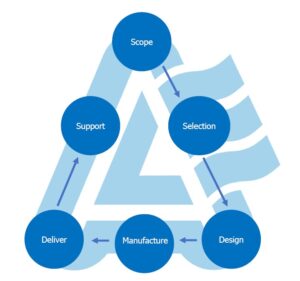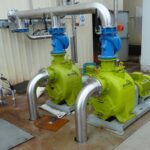Pumping wastewater is necessary for the health and safety of all. However, it can potentially create significant hazards and produce environmental, health and safety risks. If a discharge or overflow occurs it can affect inland, marine and ground waters and can compromise the safety, health and hygiene of the wastewater workers and the general public. Further risks are associated with pump placement and pump maintenance. With this need to source safer methods to pump wastewater, the expert engineers at Allflo Pumps have created ways to minimise the risks associated by working with or around wastewater pumps.
The environment and you
Pumps are exposed to trash and waste of all kinds, and although constant cleaning and maintenance is necessary, it does expose workers to health and safety risks. Aware of this, Allflo’s wide range of Remko pumps are specifically designed and manufactured to minimise, and at times eliminate, any potential safety and environmental risks.
Prevent overflow
With the possibility of pipework over pressurising from the pumps, there is a risk of wastewater overflow. With overflow, wastewater then seeps into the environment, polluting inland, marine and ground waters. To prevent this, Remko pumps are automatically controlled via pressure transducers, controlling pressure and having the ability to vary speed to increase or decrease the pump discharge pressure, preventing the pipework from bursting.
Pumps designed for safety
Keeping workers safe during maintenance from exposure has further influenced the pumps design and features. Allflo’s Remko pumps will self-prime and re-prime, clearing passages of air and pumping without supervision, as well as run dry. These features reduce maintenance costs and the safety risks that maintenance can pose to personnel. To reduce further risk, Remko pumps can handle solids up to 76mm in diameter, and if a blockage were to occur, it doesn’t take much to clear the impeller. However, personnel safety extends further to pump placement.
Above, below or ground level
So, what are the risks associated with pump placement, and storing them below or above ground level?
Firstly, using multiple pumps to pump wastewater from a height can be dangerous. Whether or not the pipe is in a pit or up on a platform with a significant drop, you continuously run the risk of it falling. To eliminate this risk pumps should remain at ground level with only the pipework running down into the pit, therefore, creating little or no danger as the risk of it falling into the pit, or from on a platform, is removed.
Secondly, there is potential danger and risk associated with pump maintenance and the use of cranes or other lifting machinery. By having Allflo’s pump systems remain at ground level, it means that maintenance can occur while the pump is still connected to the pipe system, and therefore it doesn’t need to be lifted or moved. By eliminating the need to use cranes and other lifting machinery, costs and risks are greatly reduced.
Safety first
Choosing the right equipment not only ensures the health and safety of workers, but that of the general public and environment. It is vital that workers do all they can to minimise risk for it not only prevents health problems, but also helps to reduce costs. Investing in the right pump is an investment in the future of not only the workers but the company as a whole.

























































































